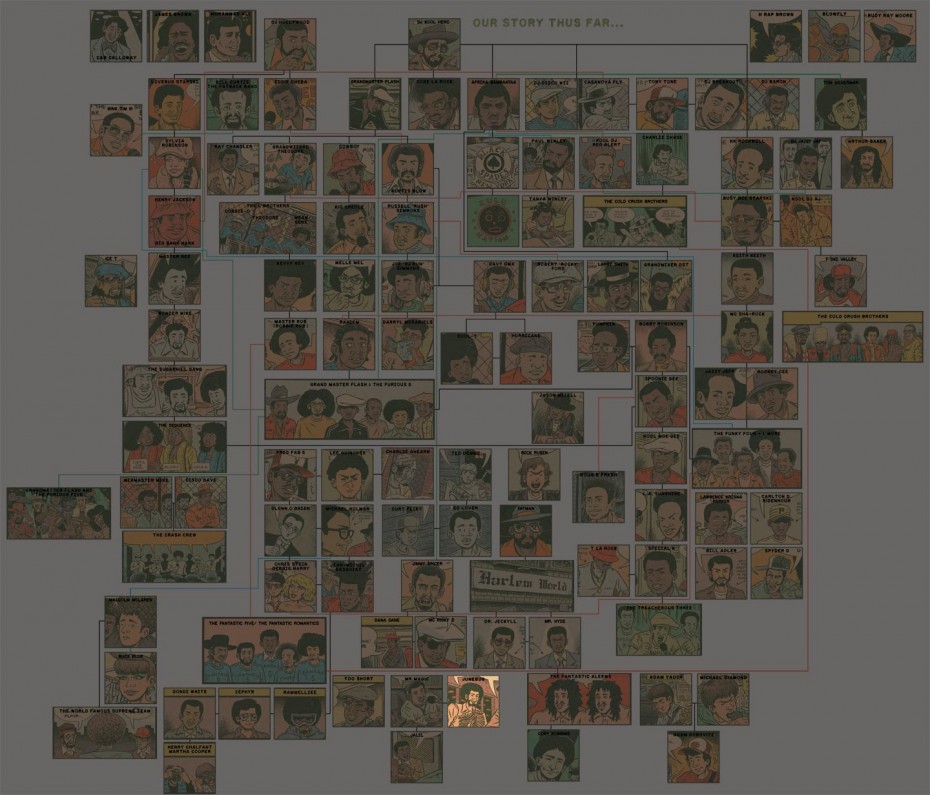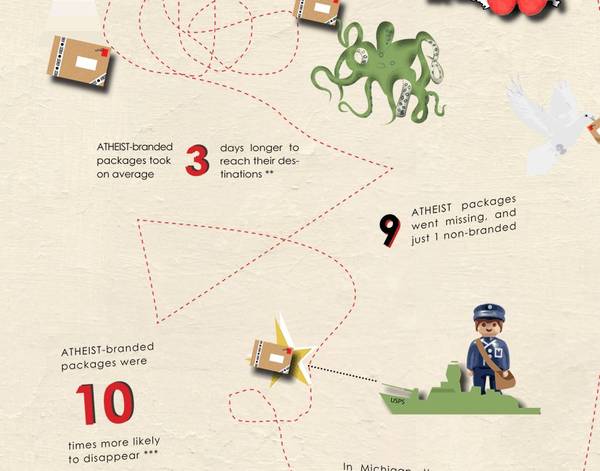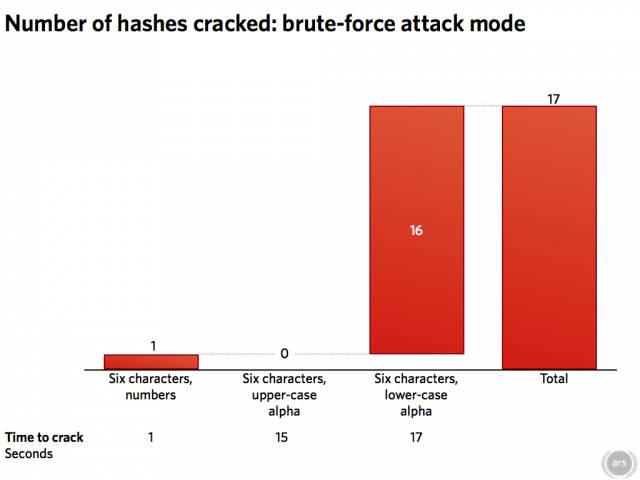[Most Recent Entries] [Calendar View] [Friends View]
Tuesday, March 26th, 2013
- Genocide trial begins in Guatemala, for US-trained former dictator ...
- Guatemala: Day 5 of Montt genocide trial; "They viewed us as if we ...
- Guatemala: Audio and video livestreams of genocide trial for ex ...
- Guatemala genocide trial continues; watch or listen live - Boing Boing
- Guatemala: In 1982, ex-dictator Rios Montt told this documentary ...
- NPR Xeni Tech - Guatemala: digital archives may help find ...
- NPR "Xeni Tech" - Guatemala: Unearthing the Future - Boing Boing
- NPR Xeni Tech: Storm Victims' Remains Exhumed in Guatemala ...
| Time | Event |
| 5:36a | Brain Rot: Hip Hop Family Tree, DJ. Junebug, and a Homeless Hip Hopper Read the rest of the Hip Hop Family Tree comics! |
| 6:23a | Store wants $5 browsing fee to deter "showrooming" by online shoppers
I'd go further than this. It takes a lot of retail exposure to turn some browsers into buyers -- you might see something in a shop, think about it, and go back. Further, getting people into the shop is a significant expense for most businesses. Once a person is in your business, you have lots of opportunities to try to convert that person into a buyer, in an environment that you control (see NYC Fifth Ave retailers, who run their escalators in an alternate-reverse pattern so you have to wind your way past all the high-impulse goods and displays to get to the top floor; or grocers who put the milk at the back of the shop). Adding literal barriers to entry is utterly self-sabotaging. Finally, the idea of imposing a head-tax on everyone entering the shop is especially misguided. It means that a customer who thinks he can talk his wife/kids (or husband, friends, whatever) into accompanying him into the shop while he grabs something on the way past is doomed to not making a purchase. What's more, the retailer loses the chance to convert some of those tag-alongs into customers. Store Combats Showrooming With $5 ‘Just Looking’ Fee [Consumerist/Chris Morran] (Photo: BarrettFox on Reddit</a>) |
| 6:39a | Comedy troupe loses YouTube account after viral success of "PS Gay Car," can't get anyone at YT to l Wil Wheaton sez,
Google deletes "PS Gay Car"— We need your help! (Thanks, Wil!) |
| 7:06a | Brighter Later, "The Woods," music video animated by Polly Dedman  A track from Melbourne-based band Brighter Later, in a music video by animator Polly Dedman. A track from Melbourne-based band Brighter Later, in a music video by animator Polly Dedman. The band's debut LP The Wolves is out this month: iTunes, bandcamp. I love Polly Dedman's animated GIFs, too; one is below, and there's a tumblr for them here. Check out this narrative illustration blog from Polly, too: tellnotales.net. Brighter Later. Photo via brighterlater.net. |
| 7:38a | Girl's Kickstarter to go to RPG camp brings out the horrible, horrible trolls
For the past several days, I've been seeing an obviously silly conspiracy theory rocket around the usual online places. It concerns Susan Wilson, whose nine-year-old daughter Mackenzie was challenged by her older brothers when she expressed an aspiration to make games, Mackenzie and her mom posted a Kickstarter to raise $800 for an RPG camp where she could hone her game-development skills. And out came the trolls. One group was convinced that this was a scam by a "millionaire" (Wilson once attended a fundraiser where she was photographed with Warren Buffet); the other was convinced that this was a radical feminist man-hatin' exercise determined to raise funds by pitting little boys against little girls. Both theories were silly on their face, but lots of credulous guys found something they liked in it -- specifically, evidence of a vast shadowy conspiracy of emasculating millionaire women who want to relegate men to the scrapheap of history -- and repeated it, and it refused to die. Worse, the campaign whipped up the kind of men who respond to their feelings of discomfort with death and rape threats. Keep it classy, guys. Thankfully, CNet's Eric Mack took on the unenviable task of rebutting the rumors. And as he points out, the fundraiser has cleared $20K, and Wilson's going to use the excess money to fund girls-in-STEM causes. Victory.
Trolls take on 9-year-old girl's Kickstarter project...and lose |
| 7:40a | Trajectory “Life is full of choices," says punk rocker and activist Henry Rollins, "if you have the guts to go for it." The thing about choices, though, is that we make them all the time without realizing it. The decisions that matter don't come as neat, freeze-framed challenges laid before us—they present themselves years after we've already made them, in the form of memories, regrets, and as tightening gooseflesh, synaptic trails lighting up the dark corners of experience. On an evening warmed by the summer sun and the chaos of home, a few weeks before the start of 4th grade, I did something that didn't become a choice until years later. I grabbed a comic book from my brother. It was one thing to be be permitted into Russell's inner sanctum; it was another thing entirely to be allowed to sit among his collection, all carefully spread out across his floor. The Amazing Spiderman and The Avengers by the dozen; covers featuring Judge Dredd, all the way from England. Touching the cover of J. M. DeMatteis's Moonshadow, I sang the Cat Stevens song with the same title, instinctively drawing the connection. Russell raised his eyebrow, and I stopped; best keep him happy if I didn't want to wear out my welcome. "You can only borrow one," he said, as I leafed through the fanned-out books, all glossy covers and cheap newsprint. He was merely asserting the limited promise he'd struck with our mom, a bargain born from some typical, trivial childhood sharing dispute that both of us had already forgotten. Perhaps, in another world, another me delved deeper into Moonshadow or discovered Alan Moore early in the pages of Warrior or Swamp Thing. But what caught my eye—a 4th-grande female eye at the earliest threshold of maturity—was nothing like anything I'd ever seen before. A flaxen figure with ears pointed like those of the gigantic wolf at his side, angling a sword at an unseen threat, protecting others of his kind, crouched, their faces taut with fear, surrounded by an inferno. As male, muscular and intense as everything else in the pile—but different. Across the top, the title: ElfQuest. “This one.” “That's a first issue.” Years earlier, my chubby two-year-old hands slayed his '73-vintage, first edition of “Ghost Rider”, and he was in no mood to cut slack with the good stuff. The boy hadn't forgiven me, and the U.S. Marine still hasn't. But there's a certain look that a little sister can give an older brother, a look that breaks their willpower down like waves on sandcastles. I wouldn't know how I did it, but I did it all the same, and didn't need to say another word. “Fine, take it.”. Clutching the comic—now a symbol of familial trust—I scurried away. “But bring it back to me exactly as it leaves this room,” he called after me. From that moment I was obssessed with this weird, winsome tale, so unlike anything else I'd seen. It was my first other world, one of those places that certain among us head to like a second home, a base camp on the hill of childhood self-discovery. I grew up loving the adventures of the Wolf-riders, their own fragile lives held between each thin page. Each mylared issue added to my collection was stored in a huge German cookie tin resembling a treasure chest, always tucked under my bed: if the house burned to the ground, that was the first thing I'd be grabbing. Few friends took an interest in my comic-book lit fix, but this only made it more a part of my own fledgeling identity. I was a geek, and my geeky idée fix was ElfQuest. Grown-ups tend to call this stuff escapism, and maybe it is. But fabulous, fantastic stories are about more than getting away from one's troubles. They're how mythology, the shared hallucinations exposing the nature and nuture of mankind, find a way into us. They're a trip, a door to other places, where ideas can inspire and dreams can instruct. And yet, that's just the easy explanation, the Hallmark card answer to what's going on here. Here's the real secret, the true story that no bro can deny: the portals opened by these fables, by stories told with such deep and abiding love that they free us to revel in our invincible geekliness, don't really lead to other worlds. They lead to other people. For older generations, the finding happened slowly, by mail and by meeting in the flesh. But times have changed, and now there's no hiding from them. On a spring afternoon, years later, one of my oldest friends and I were figuring out the Internet, meditating on the screeching Om of AOL's dial-up sequence. I don't remember if it was on Altavista or Magellan or WebCrawler, but I remember the first thing we typed into one of those little white boxes: E L F Q U E S T. Results appeared by the dozen. Chills. Not only was I was not alone, but there were many of us. We were legion. We stumbled upon sites set up to honor favorite characters and clans from the story's rambling cast, where each mouse click brought forth a smile and a deluge of artwork and fiction by other fans. The crafter of one such site had a tiny picture of himself tucked on a back page, linking to a bio. Something about his simple and honest way of writing attracted me; and after weeks of agonizing, I listened to my gut and sent him some of my own. 5,000 miles away, an email sat in the inbox of a total stranger. Whatever relationship followed would be built on words, underpinned by a mutual love of a choice made years earlier. My fourth grade self could never have known it, but that accident set a trajectory to a husband and best friend. Everyone's flavor of fable is a little different, and what tickles me might not tickle you. But they all do the same thing. They help you find the others. ElfQuest at Boing BoingFriendly Darkness The secret history Trajectory A Girl at the 1978 Comic-Con Part 1 of the Final Quest Prologue Read all 6500 pages of ElfQuest online |
| 7:42a | Alaa Wardi, a capella YouTube star from Saudi Arabia: "Risala Ela..." Alaa Wardi (Twitter, instagram) is a Saudi singer whose a capella harmonies and one-man viral videos have become big hits throughout the mideast. His latest, "Risala Ela...", is out today in video and as a DRM-free pay-what-you-want download.
Lyrics: I've been waiting for years, to find someone new, that would fill my hole, and make me forget you. More of his recent work below. I love this guy.
(Longtime Boing Boing reader Alexander Ringis recently turned me on to him—thanks, Alex!)
|
| 9:11a | |
| 9:24a | Cardboard cops to deter traffic violators  I've heard anecdotal evidence that lifesize cardboard cut-outs of police officers in shops can deter shoplifting. Now Bangalore police are using the same method to deter traffic violators. "It is not a gimmick. Wherever we have put up these cut outs, violations have come down," Traffic Commissioner MA Saleem told the BBC. I've heard anecdotal evidence that lifesize cardboard cut-outs of police officers in shops can deter shoplifting. Now Bangalore police are using the same method to deter traffic violators. "It is not a gimmick. Wherever we have put up these cut outs, violations have come down," Traffic Commissioner MA Saleem told the BBC. |
| 9:43a | Guatemala genocide trial: Day 6. "If I die, the story of what I lived will never be forgotten"  Photo: NISGUA. A witness testifies in the trial of Rios Montt, with aid of court-appointed Nebaj Ixil interpreter. As Emi McLean writes on the Open Society Justice Initiative's blog about the genocide trial in Guatemala, "Semana Santa (or Holy Week) seemed to slow down Guatemala City everywhere but in Judge Jazmin Barrios’s courtroom on Monday." And the trial continues at breakneck speed. The prosecution of Jose Efraín Rios Montt, the Army general who ruled Guatemala from 1982-1983, and his then-chief of military intelligence Jose Mauricio Rodriguez Sanchez, re-opens for the 6th day today in Guatemala City. The charges of genocide and crimes against humanity they face are based on evidence of systematic massacres of Mayan citizens by Guatemalan troops and paramilitary forces during a most bloody phase of the country's 36-year civil war. The US government provided assistance to Montt and other Guatemalan military dictators that followed in that era, in the form of funding, training, military and CIA personnel, and weapons that were used against the indigenous population. Watch live video from the courtroom here; listen to audio here. A Twitter list with accounts who are live-tweeting the trial is here. On Monday, March 25, the court heard 13 witnesses for the prosecution recount horrifying accounts of atrocities they witnessed and survived, committed by soldiers under Montt’s command. Again, from McLean's account:
Witnesses continued to describe the way that they were treated as subhuman: “as if we were animals”. Some witnesses also described being liberated with the recounting. NISGUA, the Network in Solidarity for the People of Guatemala, is also providing excellent live-blog coverage of the trial. From their account of Monday's proceedings:
Today, Tuesday, March 26, when the tribunal re-opened, Rios Montt's defense team demanded that judge Jazmin Barrios be removed from the case. Their complaint against her (tl;dr: she isn't impartial because she's had various in-court conflicts with members of his legal team over the years) was originally presented on March 21. The court deliberated over their complaint today, them rejected it. "We are impartial judges and we don't accept threats of any kind," Barrios said. "At this point, no objection can delay the judicial process." And then, the testimonies of the day began with an 87-year-old man, Clemente Vásquez. Vásquez described how Montt's forces killed his wife and children, and methodically raped women in his village. “I went to get corn and when I came back my wife was dead," he told the court. "The pain inside hurts me, it hurts, but I want justice.” The second testimony of the day came from Magdalena Marcos de Leon, whose voice trembled as she took the witness stand. "Do not be afraid, no one is going to harm you here," the judge told her. The judge recognized as she gave testimony that the woman was visibly frightened about speaking in court. "When my husband died, they grabbed me, I was holding my baby," Magdalena later explained. "I was sick, and he tied me up." She went on to describe how soldiers burned houses in their village, then arrived at their home and tied her and her husband up. The soldiers then chopped off her husband's head. "I don't know why my husband was killed, he wasn't guilty," she says. "We didn't have any weapons in the house." Were you raped, an attorney for the prosecution asks her. "Yes, because they threatened to stab me with knives." She had 5 children with her. She somehow escaped to hide in the mountains with the children. They all suffered from malnutrition and exposure to the cold, during the six months they hid in the mountains, all their clothing and food and belongings destroyed. She describes how children children died of "susto" (trauma/fear) and hunger, including one of her sons. He was one year old.
Photo: Rodrigo Baires Quezada for Plaza Publica. "Residents of Santa Maria Xalapán accompany the coffin of Exaltation Ucelo Marcos, in the village of El Pito Laguna. Ucelo died in an attempted kidnapping along with three other Xinca activists Sunday night. Two escaped from their kidnappers. Meanwhile in Guatemala, more political violence: the murder of indigenous activists who are protesting mining operations of the Canada-based multinational firm Tahoe Resources. Renata Avila writes at Global Voices:
While Guatemala attempts to bring former dictator Efraín Ríos Montt to justice in a landmark genocide trial, deadly violence elsewhere in the country continues unpunished. In less than one month, five activists and human right defenders struggling against mining companies and fighting for land and labor rights have been murdered in rural areas. (...) as No a la Mina (No to the mine) pointed out [es], the recent repression resembles the death squad operations that once left thousands of leaders killed in Guatemala. If social conflicts are going to be solved with a gun and left in absolute impunity, Guatemala's future looks just like its grim past.The Center for International Environmental Law has a related petition here: "Call for investigation and company departure in response to recurring violence in area of Canadian-owned silver project."
|
| 9:45a | Your WiFi-enabled camera might be spying on you Every networked sensor package in your immediate vicinity can be used to spy on you unless it is well-designed and transparent to you and the wide community of security researchers. If that sounds paranoid, check out the video above, wherein some security researchers show that they can covertly operate WiFi-enabled personal cameras and turn them into bugs.
Stuff like this is why DRM and EULAs are so insidious. The existence of devices that attack their owners affects us all. It is a public health problem. Any time we pass a law that makes it illegal or legally perilous to point out flaws in technology, we make it harder to solve the public health problem, and we're all at risk. Digital cameras easily turned into spying devices, researchers prove (via /.) |
| 9:48a | Spooky tree sculpture in Bali  BB pal Karen Marcelo photographed this magnificent living tree sculpture in Ubud, Bali. More beautiful photos in Karen's Flickr stream, k0re. |
| 9:54a | Automate collecting wonderful things Sponsored by For information about Rackspace, go to Rackspace.com/open. One unique and special treat in working as Boing Boing's web developer has been to see how truly prolific writers do their work. Not only are they all hugely practiced at writing, but they've each developed a process and a format for creating or curating content that enables them to write more and quickly. I've spent the last couple years trying to cheat a bit at collecting large volumes of curated content by putting as much of the work as possible onto computers. My main experiment with rapid blogging is the animated GIF section of my media blog. I love animated GIFs, and I'd picked up a habit of saving my favorites to a folder on my desktop. A year and a half ago I moved that folder to my Dropbox's Public folder, which syncs all the files out to the cloud and lets anyone view them in their browser. Then I set up an IFTTT action to slurp new files into the blog. And then I forgot about it and went about my business. With basically no added effort I've posted over three thousand GIFs to my blog. It averages six new posts a day, sometimes I'll post thirty at a time when I find a bunch of good ones. IFTTT can connect to lots of other services, so I've set it to push out GIFs to my Tumblr as well. It's a great treat to scroll back through hundreds of fun images I've saved, and I often find myself pleasantly surprised by what I've posted. This method of curating things gives some neat advantages over other sharing services. When you set up the rules for posting and IFTTT or another automated system does the legwork, you create limitations to what you can post in the process. It forces an editorial voice: now I know I'm going to only post GIFs by saving them to that folder, so all I have to worry about is whether they fit the collective whole. Applying this process to other content types proves to be very successful: a friend and I have collected nearly an album a day on our shared music blog for nine months through some really simple custom scripts to ease the process. I never run short of excellent tunes now that we've collected it so quickly. Building large collections of content, even if it's focused at dumb GIFs or indie music albums, is easier than ever. Spend some time thinking about the parts of the process you can automate for your collections and start enjoying them more. |
| 10:22a | "Garden apartment" redefined in new green apartment building  Architect/developer Sebastian Mariscal designed and is expecting to build a 44-unit apartment building in densely-populated Boston where most of the space you'd expect to be used for parking spots is instead given over to a variety of gardens. There's a 7,000 public garden on the ground level and a roof that's 70 percent dedicated to community gardening. Meanwhile, each living unit includes a 144 square foot "outdoor room… full of vegetation." "The Apartment Complex of Tomorrow—0 Parking Spots, 46 Personal Garden Spaces" (TakePart) While Mariscal's original design only had six parking spaces, meant for rentals, and he only planned to rent to tenants who didn't own cars, the community was concerned that tenants would own cars anyway and park them on the street. So the architect added 35 spots to his plans and has apparently received preliminary approval to build from the Boston Redevelopment Authority. (Universal Hub, thanks Lis Riba!) |
| 10:28a | Games to play during commercial breaks The nice people at Hide and Seek have a collection of Tiny Games you can play while the commercials are on TV, like each player putting a finger on the screen and scoring a point for every face that they poke during the break -- winner is the most prolific face-poker.
Hide and Seek also brought us the Board Game Remix Kit, and now they're running a Kickstarter to fund a bazillion tiny games as a mobile app. Tiny Games For Ad Breaks (via Super Punch) |
| 10:48a | DIY cellphone
Mellis's Master's thesis is "Case studies in the digital fabrication of open-source consumer electronic products" and includes a 3D printed mouse, fabbed speakers and a fabbed FM radio. High-Low Tech – DIY Cellphone (via Hacker News) (Images: Laser-cut plywood and veneer case, a Creative Commons Attribution (2.0) image from mellis's photostream; Making a call, a Creative Commons Attribution (2.0) image from mellis's photostream) |
| 11:00a | The CONET Project: spy station recordings reissued 
In 1999, I wrote an article for the bOING bOING Digital site about the CONET Project, a multi-CD collection of mysterious "numbers stations" heard on shortwave. For decades, intelligence organizations have reportedly broadcast one-way messages to their agents in the field via shortwave, and the transmissions happen to sound weirder than any Stockhausen score or minimalist electronica you've ever heard -- a child's voice, or the obviously synthesized intonation on what's known as the "Lincolnshire Poacher" station, named for the folk song accompanying the numbers. Wilco's album Yankee Hotel Foxtrot is named for, and samples, a numbers station. The CONET Project has been available for several years for free download from various places online, including Archive.org. Now, the original compilers, Irdial-Discs MMX, have re-released The Conet Project in a special CD edition that includes the four original discs plus a fifth CD containing recordings of very strange "noise stations." "The CONET Project: Recordings of Shortwave Numbers Stations / 1111" "Spy vs. Spy: The Soundtrack" (bOING bOING Digital)
|
| 11:25a | 19 year old develops plan to clean up ocean trash vortexes Inhabitat shares the story of Boyan Slat, a 19 year old who seems hell-bent on cleaning up 7.25M tons of trash from our oceans. He started with a research paper in school, which won several awards. Next Slat developed a floating array of booms and garbage processing plants which he presented at TedxDelft last year, and now he's created a foundation to produce these technologies! From Inhabitat: Slat went on to found The Ocean Cleanup Foundation, a non-profit organization which is responsible for the development of his proposed technologies. His ingenious solution could potentially save hundreds of thousands of aquatic animals annually, and reduce pollutants (including PCB and DDT) from building up in the food chain. It could also save millions per year, both in clean-up costs, lost tourism and damage to marine vessels. |
| 11:33a | Ms. Boing Boing breastfeeds calf  Brazilian DJ/model Sabrina Boing Boing has apparently caused quite a stir by posting Instagram photos of herself pretending to breastfeed a calf. I knew we were planning to grow our brand but I can't recall if this idea was on the whiteboard. (NSFW: Richardson Magazine, thanks Puce!) Brazilian DJ/model Sabrina Boing Boing has apparently caused quite a stir by posting Instagram photos of herself pretending to breastfeed a calf. I knew we were planning to grow our brand but I can't recall if this idea was on the whiteboard. (NSFW: Richardson Magazine, thanks Puce!) |
| 11:56a | Muzzle-suppressor shot glasses Muzzleshot (via OhGizmo) |
| 1:28p | Summary of experimentally verified pricing heuristics A post on ConversionXL sums up a bunch of experiments on pricing and suggests ways of combining them to best effect. All electronic goods can be had for free, so every person who buys an electronic good is essentially entering into a voluntary transaction. Getting pricing right is the best way to convince (rather than coerce) customers to pay, and to frame that payment so that it's as large as possible.
Pricing Experiments You Might Not Know, But Can Learn From (via O'Reilly Radar) |
| 2:03p | Cake hotel whose rooms were filled with edible fixtures and decor
SWEET DREAMS… WORLD’S FIRST CAKE HOTEL OPENS TO THE PUBLIC (via OhGizmo) |
| 2:24p | Honk |
| 3:27p | Toronto Mayor Rob Ford's long history of public drunkenness and brawling Now, many people have come forward to say that Ford had become drunk and disorderly at military charity event called the Garrison Ball. These are just the latest in a series of incidents of public drunkenness for the mayor, who is a horrible embarrassment to the city of my birth. The Toronto Star has a long account of Ford's frequent bouts of public drunkenness and brawling, including events that he lied about at the time and later had to apologise for.
Rob Ford: ‘Intoxicated’ Toronto mayor asked to leave military ball [Toronto Star/Robyn Doolittle & Kevin Donovan] |
| 3:35p | Documentary on activist who taught people to make solar cottage industries in 16 countries Gmoke sez, "Richard Komp has taught people how to make solar as a cottage industry in at least 16 different countries over the last few years. There's a documentary called "Burning in the Sun" about his work in Mali and he's even got an Introduction to Photovoltaics series on YouTube. Reports from his 25 international trips available here" |
| 4:34p | RPG inside an Excel workbook
Arena.Xlsm Released! (via Digg) |
| 5:32p | Abandoned cake-box at airport turns into inadvertent Portal-themed security worry Unnerving People at the Airport (or: The Cake is a Lie!) |
| 6:34p | Boxes sealed with ATHEIST tape lost by USPS 10X more often than controls ATHEIST / USPS Discrimination Against Atheism? (Thanks, Alice!) |
| 8:05p | Nuts-and-bolts look at password cracking
The point, really, is that if you want to understand the relative security of different password-generation techniques, you need to understand what's involved in state-of-the-art password cracking techniques. How I became a password cracker |
| << Previous Day |
2013/03/26 [Calendar] |
Next Day >> |













 An exploration into the possibilities for individual construction and customization of the most ubiquitous of electronic devices, the cellphone. By creating and sharing open-source designs for the phone’s circuit board and case, we hope to encourage a proliferation of personalized and diverse mobile phones. Freed from the constraints of mass production, we plan to explore diverse materials, shapes, and functions. We hope that the project will help us explore and expand the limits of do-it-yourself (DIY) practice. How close can a homemade project come to the design of a cutting edge device? What are the economics of building a high-tech device in small quantities? Which parts are even available to individual consumers? What’s required for people to customize and build their own devices?
An exploration into the possibilities for individual construction and customization of the most ubiquitous of electronic devices, the cellphone. By creating and sharing open-source designs for the phone’s circuit board and case, we hope to encourage a proliferation of personalized and diverse mobile phones. Freed from the constraints of mass production, we plan to explore diverse materials, shapes, and functions. We hope that the project will help us explore and expand the limits of do-it-yourself (DIY) practice. How close can a homemade project come to the design of a cutting edge device? What are the economics of building a high-tech device in small quantities? Which parts are even available to individual consumers? What’s required for people to customize and build their own devices? 




 A Mediterranean-inspired bedroom, with edible furnishings, a caramel popcorn-filled bathtub, floating meringues and edible pearlescent popcorn bunting, all created using Light Soft Brown sugar. The perfect location for a midnight feast!
A Mediterranean-inspired bedroom, with edible furnishings, a caramel popcorn-filled bathtub, floating meringues and edible pearlescent popcorn bunting, all created using Light Soft Brown sugar. The perfect location for a midnight feast! 

 * Random enemies: Over 2000 possible enemies with different AI abilities.
* Random enemies: Over 2000 possible enemies with different AI abilities.

